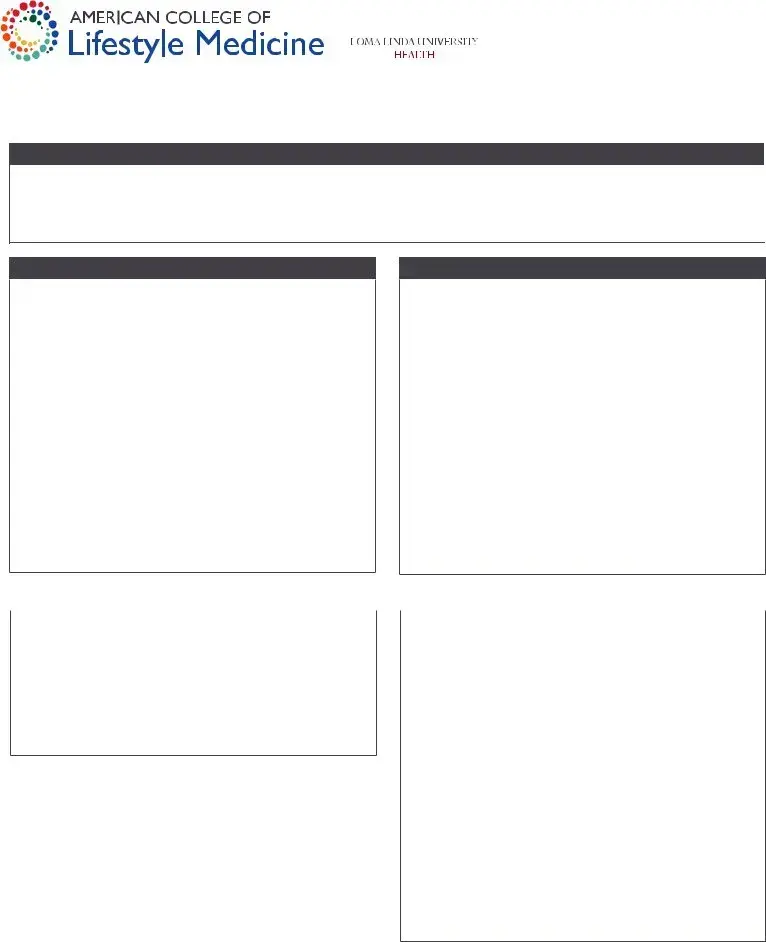Blank Lifestyle Management PDF Template
The Lifestyle Management form, brought to you in partnership by the American College of Lifestyle Medicine and Loma Linda University Health, serves as a comprehensive tool designed to help individuals assess various aspects of their lifestyle - from overall health and sleep patterns to weight management, physical activity, nutrition, mental health, and substance use. By meticulously evaluating these areas, the form encourages a deeper understanding of one's lifestyle habits and pinpoints areas for improvement. Ready to take the first step towards a healthier lifestyle? Fill out the form by clicking the button below.
Make This Document Now


